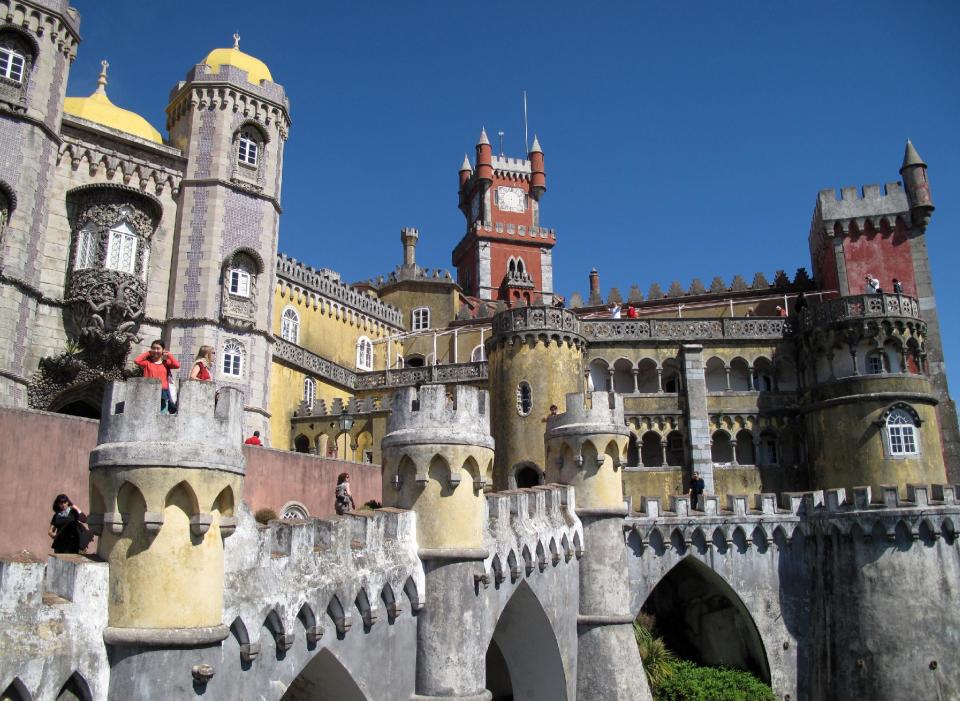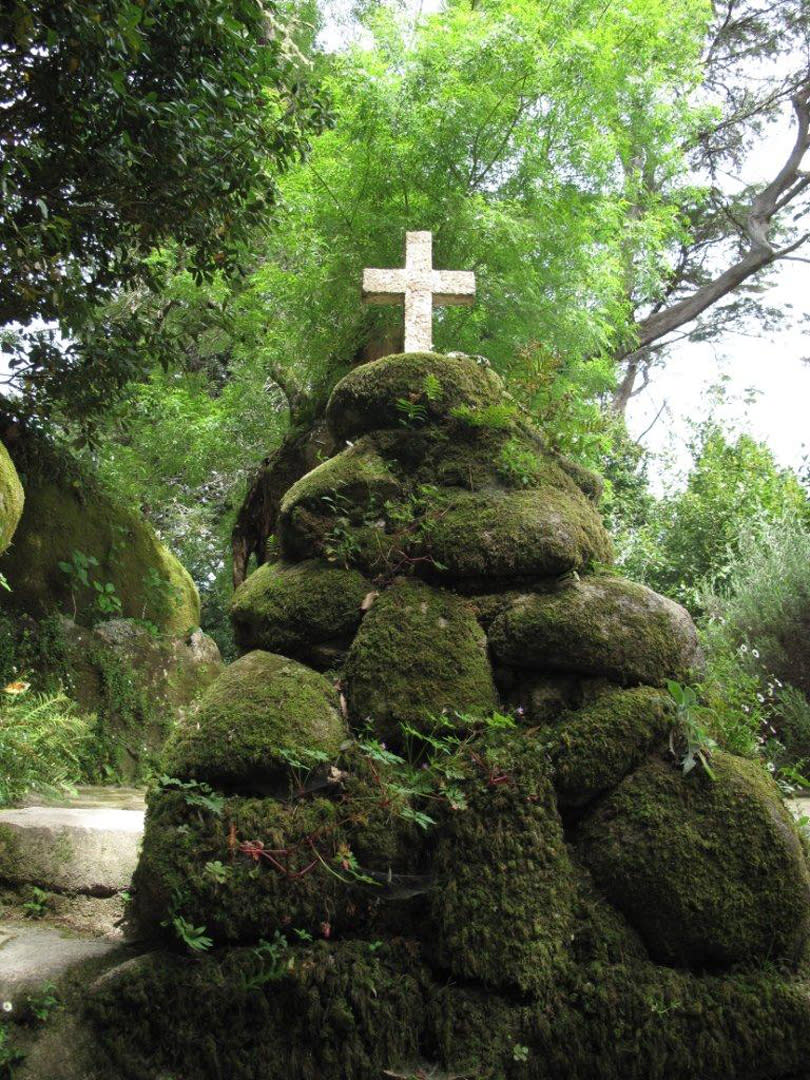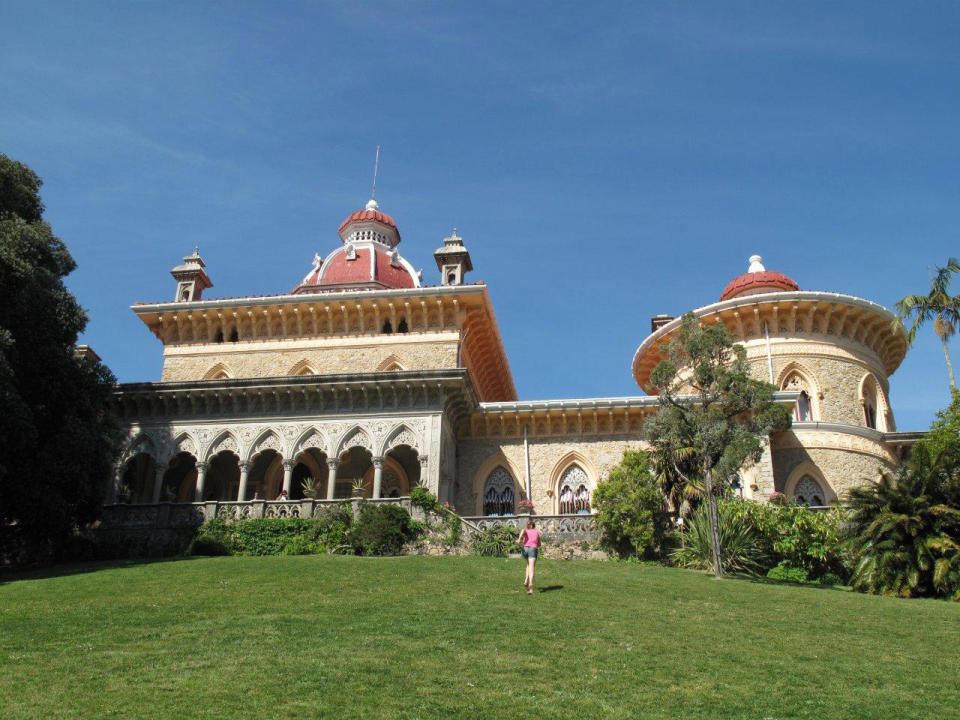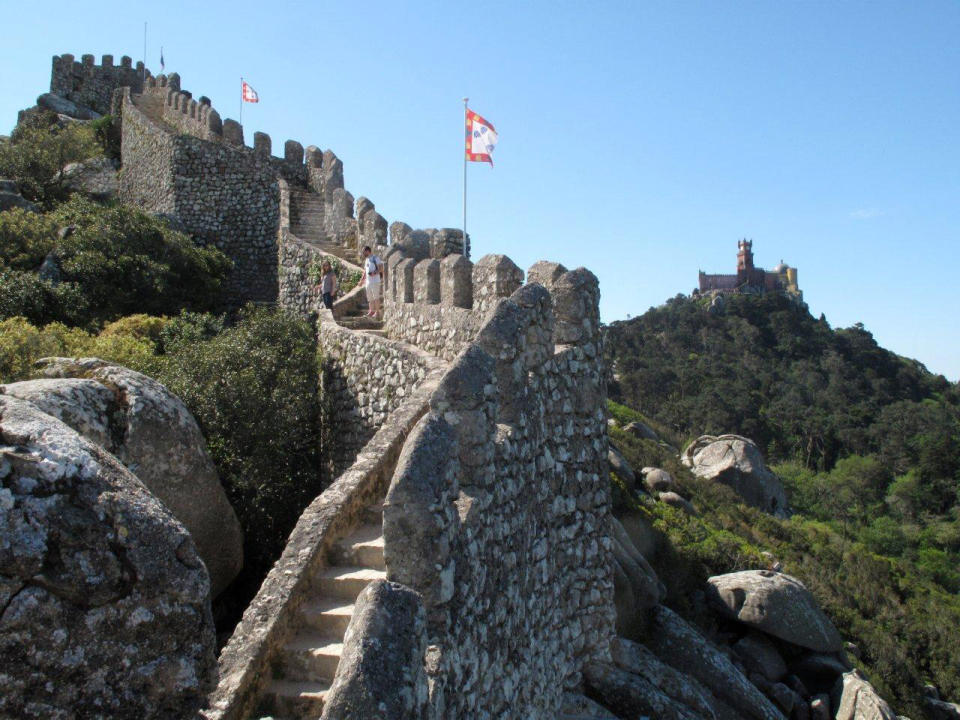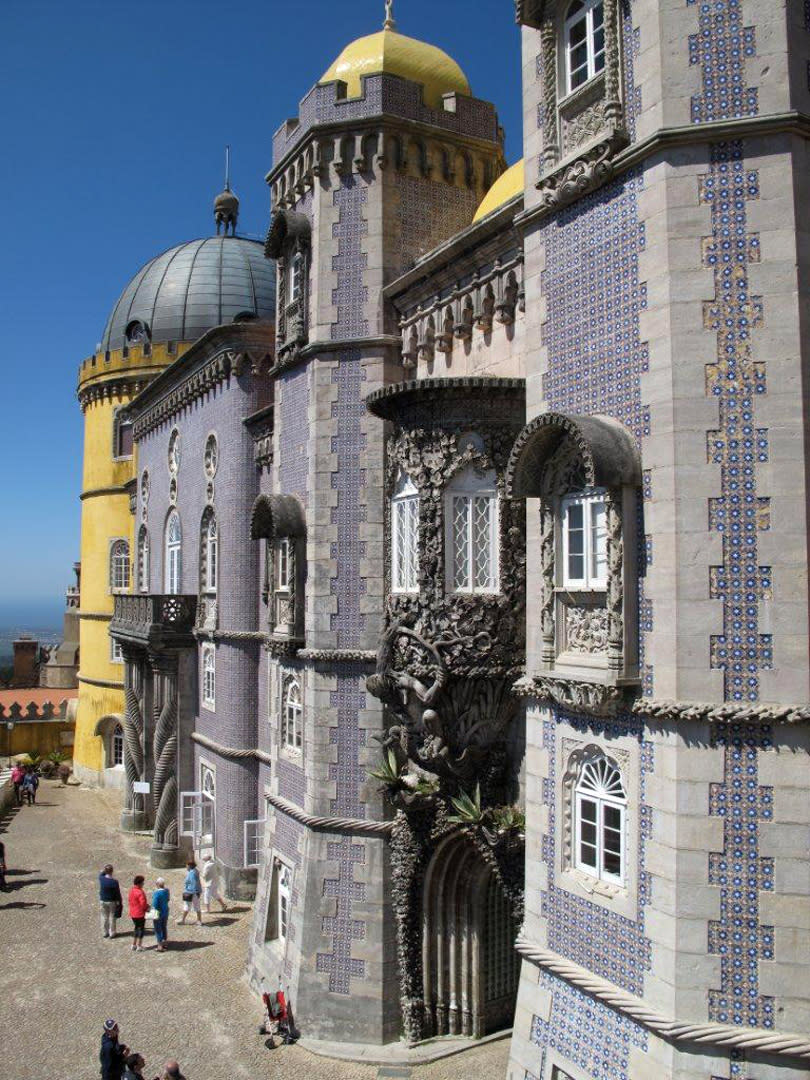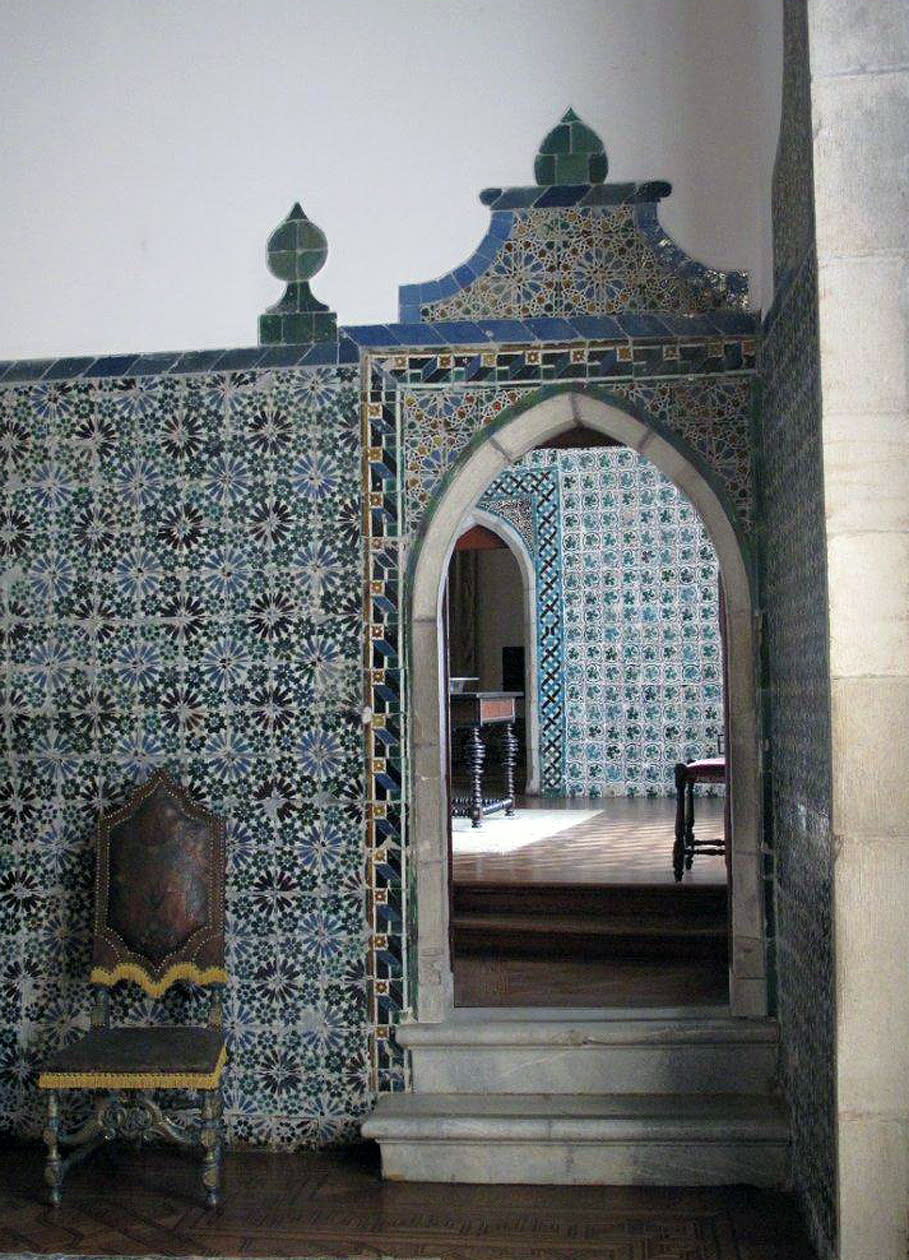Sintra, Portugal, like a castle in a kaleidoscope
SINTRA, Portugal (AP) — With sunshine bathing its multicolored facades against a backdrop of deep blue sky, the Pena Palace in Sintra is like a castle seen through a kaleidoscope.
A jumble of bright yellow domes, red towers, blue tiles, a drawbridge and a half-man, half-fish sculpture holding up a window, the Pena Palace is lauded as the finest example of Portuguese romanticism, an eclectic mix that borrows style notes from — among others — the Moors, German gothic revival and the local manueline architecture.
Fernando II, husband of Portuguese Queen Maria II, had the palace built in the 1840s around the remains of a derelict monastery. Now tourists can wander through its ornate rooms and oversized kitchens as well as its sprawling gardens, featuring plants brought back from around the world and ponds where carp and black swans drift languidly around crenelated duck houses.
And Pena is far from the only spectacular palace in Sintra, long a playground of royalty and the ostentatiously wealthy. The town's altitude and shady forests have historically provided welcome relief from sweltering summer temperatures of the Portuguese capital, Lisbon, which is now only a half-hour's drive away.
Bang in the middle of the old town is the National Palace with its distinctive conical chimneys. A couple of kilometers (miles) into the lushly forested hills is the Palace of Monserrate —once visited by British poet Lord Byron — surrounded by manicured gardens and what is billed as the first lawn planted in Portugal.
And if your eyes tire of all the palatial pomp, you can retire for a morning to the cool confines of a 16th century monastery, where Franciscan friars lived in extreme austerity, providing a stark contrast to Sintra's explosion of architectural excesses.
Overlooking it all are the well-preserved remains of an eighth century Moorish fort, whose restored ramparts cling to a hilltop above Sintra and offer spectacular views of the Atlantic Ocean and the Pena Palace on an adjacent hill.
The wealth of historic buildings led UNESCO to inscribe the entire Sintra "Cultural Landscape" on its World Heritage List in 1995, saying its "structures harmonize indigenous flora with a refined and cultivated landscape created by man as a result of literary and artistic influences."
Nowhere can that be better seen than in the grounds of the Palace of Monserrate, a summer residence for 19th century British textile millionaire Francis Cook, whose gardens include a folly of a ruined chapel with an Australian banyan tree draped over its walls, a manmade waterfall, a valley full of tree ferns from Australia and New Zealand, cacti from Mexico and a Chinese mourning cypress in the middle of the steeply sloping lawn.
The palace itself is no less spectacular, with three dome-topped towers connected by a corridor full of ornately carved arches and columns. It is not hard to imagine Lord Byron wandering from a piano recital in the northern tower's music room to the nearby billiards room before strolling past panels of Indian alabaster carved in Mogul style to the library, where he could pen a verse amid the dark walnut bookshelves.
All of the buildings around Sintra are open to the paying public and easily accessible, offering a glimpse back in time to the days when Portugal was a wealthy seafaring nation ruled by a monarchy with a penchant for palaces.
Walking from ornate bedrooms to tiled bathrooms of the palaces and gazing at their huge kitchens gives an idea of the sumptuous lives of the Portuguese royals and their guests and it is easy to feel why they flocked here from Lisbon in the summer when you stroll through the shaded gardens, catching glimpses of the ocean and surrounding hills.
But in a country currently buckling under European Union-mandated budgetary austerity measures, the pared-back simplicity of the Moorish castle and the Capuchos Convent also leave lasting impressions.
The castle was built by Moors in the ninth and 10th centuries, gradually fell into disrepair and was restored in the 19th century by none other than Fernando II, the queen's consort responsible for neighboring Pena Palace.
A short drive into the hills, austerity is taken to its extremes at the Franciscan monastery known as the Convent of the Holy Cross of Cork Convent, built in 1560 and inhabited until 1834. Here, the only nods toward any kind of decoration are the 18th century azulejo tiles in its Chapel of the Passion of the Christ. Elsewhere, doors to dormitory rooms are built deliberately small so that monks have to bow in humility just to get into the cramped quarters, and doors and shutters are lined with cork harvested from trees in the surrounding forest.
Sitting on the steps of the monks' grain store in the shadow of a leaning cork oak looking at the simple stone buildings that blend into the woods, Sintra and its palaces seem a world away.
___
If You Go...
SINTRA, PORTUGAL: http://www.visitportugal.com/NR/exeres/6BEF1189-D6BD-4473-856B-604FCEF22106,frameless.htm . There are hotels and vacation rentals in and around Sintra.
UNESCO WORLD HERITAGE: Listing for Sintra, http://whc.unesco.org/en/list/723 .
GETTING THERE AND GETTING AROUND: Direct train from Lisbon takes about 40 minutes. From the train station, bus no. 434 runs through town, past the national palace and up to the Pena Palace and Moorish Castle. Bus no. 435 runs to the Monserrate Palace. You need a car to get to the monastery. You can rent a car at the Lisbon airport; Sintra is about 17 miles (27 kilometers) from Lisbon, about a half-hour drive.

